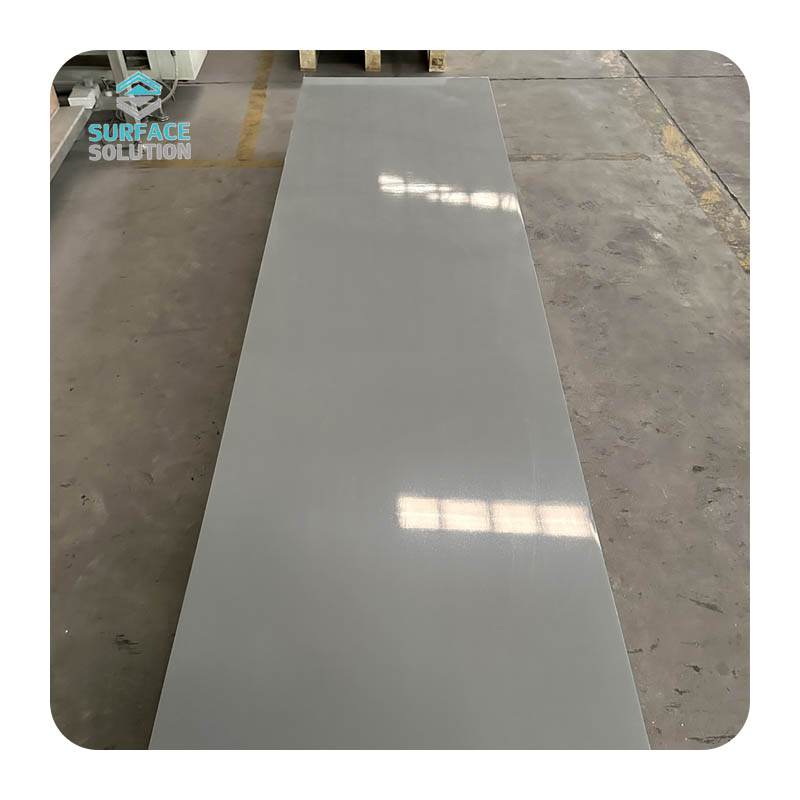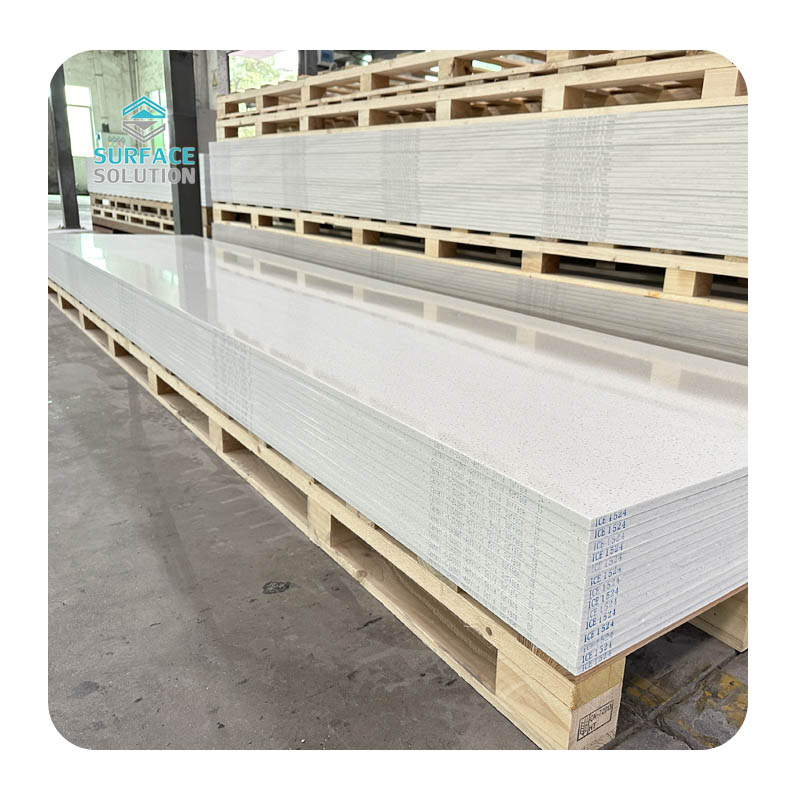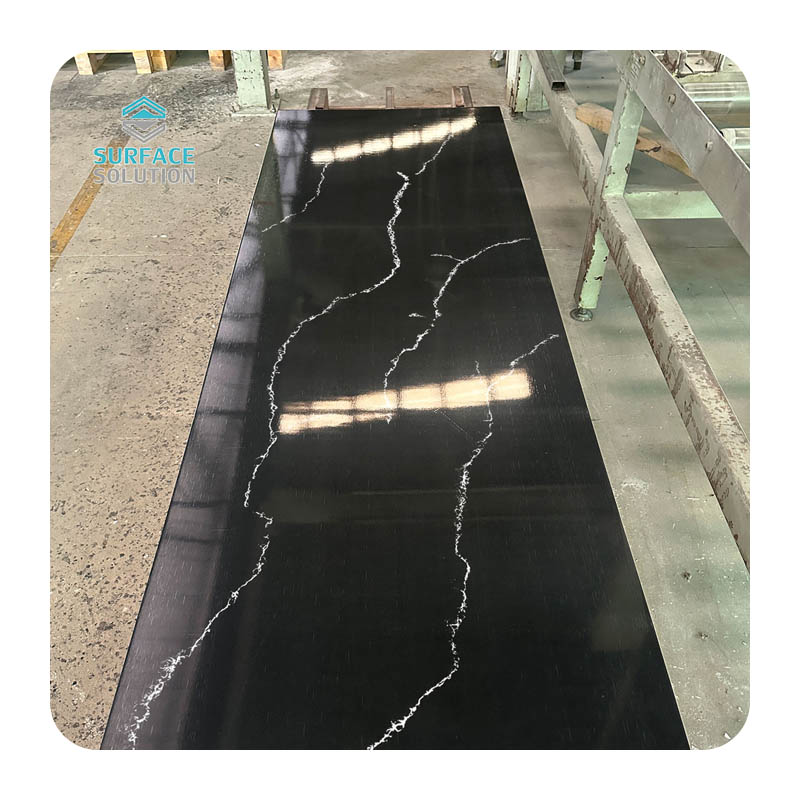Solid Surface: The Versatile Material Shaping Modern Design
In the world of interior design and architecture, the search for materials that blend aesthetics, functionality, and durability is a constant pursuit. Among the innovations that have transformed this landscape, solid surface stands out as a versatile and adaptive solution. Often hailed as a "designer’s dream material," it has become a staple in homes, commercial spaces, and public buildings alike. But what exactly is solid surface, and why has it gained such widespread acclaim? At its core, solid surface is an engineered material composed primarily of acrylic resin (or sometimes polyester resin) mixed with alumina trihydrate (ATH)—a fine, white powder derived from bauxite. This combination is heated, molded, and cured to form sheets of varying thicknesses, colors, and textures. Unlike natural stones such as marble or granite, which are quarried and cut, solid surface is manufactured to meet precise specifications, allowing for consistent quality and customization. Some formulations also include pigments, fillers, or additives to enhance properties like heat resistance or stain resistance, making the material even more adaptable to different needs.

One of the most defining characteristics of solid surface is its seamless appearance. When installed by skilled professionals, the joints between sheets can be bonded so precisely that they become nearly invisible. This creates a smooth, uninterrupted surface that not only looks sleek and modern but also eliminates crevices where dirt, bacteria, or moisture can accumulate. For this reason, solid surface is a top choice for environments where hygiene is paramount, such as hospitals, laboratories, and commercial kitchens. In residential settings, this seamless quality adds a touch of luxury to countertops, vanity tops, and shower surrounds, creating a cohesive look that elevates the overall design of a space. Durability is another key advantage of solid surface. Unlike natural stone, which is porous and prone to staining from liquids like coffee or wine, solid surface is non-porous. This means it resists absorption, making it easy to clean with just soap and water—no harsh chemicals required. It is also resistant to scratches, though minor scratches can often be sanded out and polished to restore the surface to its original condition. While it is not completely heat-resistant (extreme temperatures can cause discoloration or warping), many manufacturers offer heat-resistant variants, and using trivets or hot pads can easily mitigate this risk.
The versatility of solid surface extends beyond its practical benefits to its design potential. It is available in a vast array of colors, from neutral whites and grays to bold blues and reds, as well as patterns that mimic natural materials like marble, granite, or wood. This allows designers and homeowners to achieve the look of high-end natural stone at a more affordable price point, without sacrificing durability. Additionally, solid surface can be thermoformed—heated and shaped into curved or organic forms—opening up endless possibilities for creative designs. From curved bathroom vanities to custom-built reception desks, solid surface can be tailored to fit any space or style.

In terms of installation and maintenance, solid surface offers convenience that many other materials lack. Its lightweight nature (compared to natural stone) makes it easier to transport and install, reducing labor costs and installation time. Once installed, maintaining solid surface is straightforward: regular cleaning with mild soap and water is usually sufficient to keep it looking new. As mentioned earlier, minor scratches or scuffs can be repaired with sandpaper and a polishing compound, ensuring that the surface retains its beauty for years to come. For more severe damage, professional repair services are available, making solid surface a long-lasting investment.
Looking to the future, solid surface continues to evolve to meet the changing needs of the design industry and consumers. Manufacturers are increasingly focusing on sustainability, developing eco-friendly formulations that use recycled materials or reduce volatile organic compound (VOC) emissions. Some brands now offer solid surface made from up to 30% recycled acrylic, making it a more environmentally responsible choice. Additionally, advancements in technology are leading to new textures and finishes, such as matte or textured surfaces that add depth and dimension to designs.
In conclusion, solid surface is much more than just a countertop material—it is a versatile, durable, and aesthetically pleasing solution that has revolutionized modern design. Its seamless appearance, non-porous nature, and customizable design options make it suitable for a wide range of applications, from residential homes to commercial and public spaces. As sustainability and innovation continue to drive the industry, solid surface is poised to remain a top choice for designers and homeowners who seek both functionality and style. Whether you’re renovating a kitchen, designing a hotel lobby, or building a laboratory, solid surface offers a reliable and beautiful solution that stands the test of time.




 What Are Solid Surface Countertops? A Complete OverviewIn kitchen and bathroom design, solid surface countertops stand out as a versatile choice, balancing functionality, aesthetics, and durability. Unlike natural stone (granite, marble) or synthetic quartz, they offer unique benefits—but what exact
What Are Solid Surface Countertops? A Complete OverviewIn kitchen and bathroom design, solid surface countertops stand out as a versatile choice, balancing functionality, aesthetics, and durability. Unlike natural stone (granite, marble) or synthetic quartz, they offer unique benefits—but what exact A Comprehensive Guide to Cleaning Solid Surface CountertopsSolid surface countertops, such as surface solution, Staron, or Swanstone, have become a popular choice for modern kitchens and bathrooms due to their durability, seamless design, and resistance to stains. Unlike natural stone like granite or marble,
A Comprehensive Guide to Cleaning Solid Surface CountertopsSolid surface countertops, such as surface solution, Staron, or Swanstone, have become a popular choice for modern kitchens and bathrooms due to their durability, seamless design, and resistance to stains. Unlike natural stone like granite or marble, What Is Solid Surface Material? A Complete GuideIn the world of interior design and home renovation, "solid surface material" is a term frequently heard—but what exactly is it? Unlike natural materials mined from the earth or rigid synthetic alternatives, solid surface is a engineered man-made mater
What Is Solid Surface Material? A Complete GuideIn the world of interior design and home renovation, "solid surface material" is a term frequently heard—but what exactly is it? Unlike natural materials mined from the earth or rigid synthetic alternatives, solid surface is a engineered man-made mater What Are Solid Surface Countertops Made Of? A Comprehensive BreakdownSolid surface countertops have become a popular choice in modern kitchens and bathrooms, celebrated for their seamless appearance, durability, and versatility. Unlike natural stone (such as granite or marble) or ceramic tiles, soli
What Are Solid Surface Countertops Made Of? A Comprehensive BreakdownSolid surface countertops have become a popular choice in modern kitchens and bathrooms, celebrated for their seamless appearance, durability, and versatility. Unlike natural stone (such as granite or marble) or ceramic tiles, soli
















